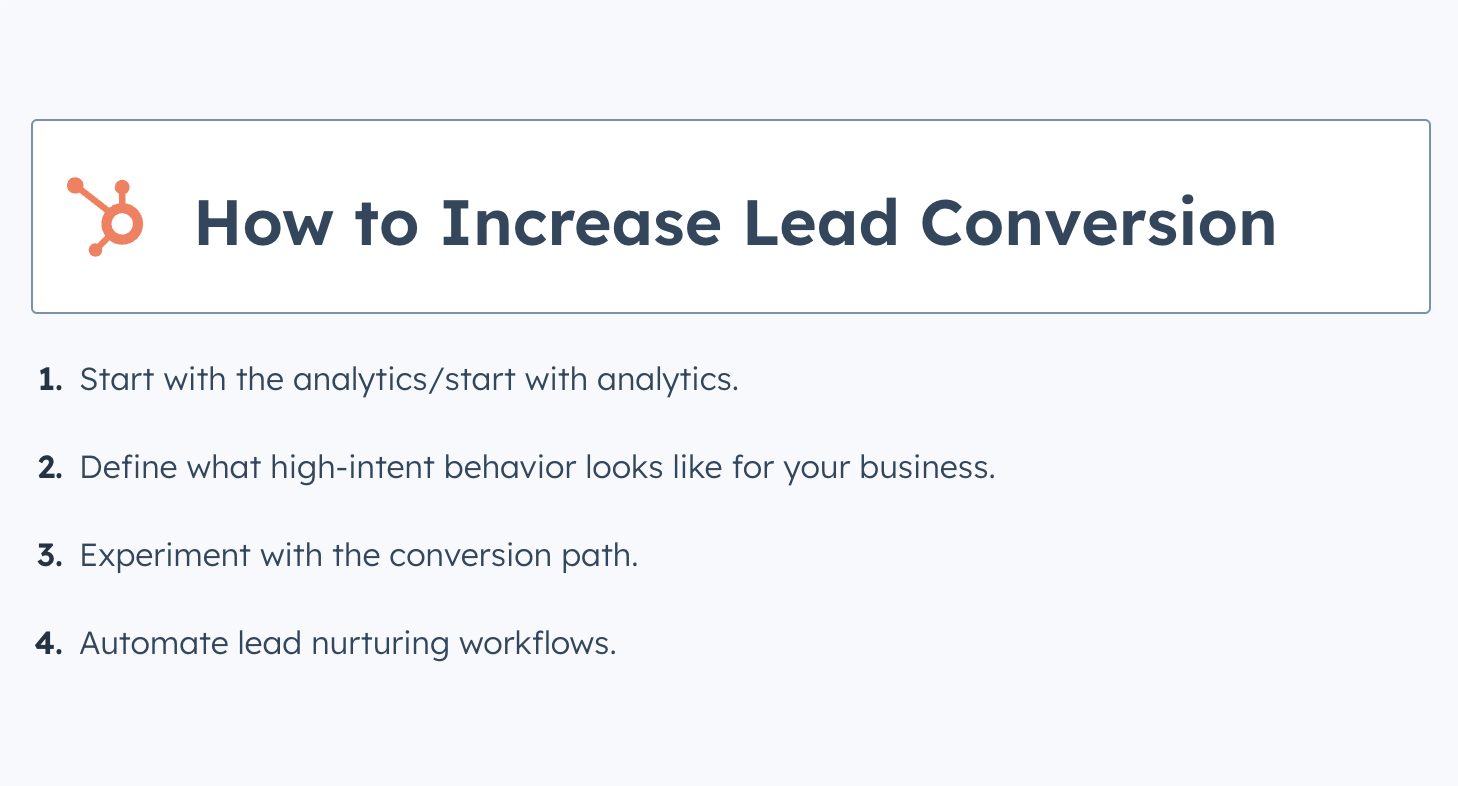What is Lead Conversion?
Lead conversion is the process of converting leads or potential customers into actual customers. Marketers can use many nurturing tactics, such as behavior automation, retargeting, and email nurturing. However, we want to remember that these leads were prior prospects.
Why should companies seek to improve Lead Conversion?
There are several reasons why a company should look to improve its lead conversion strategy. One reason is to compare approaches to determine the performance of various lead generation campaigns to assess how effectively it works or if it is even working. Another important reason is to understand your buyer’s journey and where you may need to make adjustments in either marketing or sales processes that are currently in place. Lastly, budget planning is another reason why it is crucial to improve lead conversion. Lead conversion will give you a better insight if any adjustments are needed to any allocated budget.
When should companies focus on addressing it?
It does not matter what stage your company is in; ensuring your lead conversion aligns with your marketing and sales initiatives is vital to keeping your company in business.
How should a company improve Lead Conversion with HubSpot Marketing Hub?
Before improving your lead conversion, you must build the lead conversion process. This article gives an excellent overview of how to build a lead conversion process in HubSpot.
Gather information on leads.
Identify high-intent behaviors.
Use an SLA to align your sales and marketing teams.
Build the lead conversion path.

Only some Marketing platforms will use the same process to improve lead conversion. HubSpot has put out four steps to increasing lead conversion using HubSpot.
Start with analytics
First, you want to make sure you start with analytics because once you look at the data, it will lead you to your potential answer. Looking at reports will tell you firsthand whether what you currently have in place is working. It will also tell you if your lead conversion has been low for a while, where it started to drip, and what could have caused it to happen. It could be the length of your forms, your CTAs placement, or even that there isn’t a great alignment between sales and marketing.
Define what high-intent behavior looks like for your business.
You may be surprised that many companies just need to look at their lead qualification steps and notice there might be some work that needs to be done. Do some of your qualification steps need subtle tweaks or do you need to overhaul which behaviors you’re looking for? Take a step back and look at the bigger picture to determine which steps need to be taken.
During this step, you will want to work closely with your sales teams to review from their experience and what they believe is a lead ready for sales engagement, which leads aren’t, and why. Before a lead is handed off to the sales team, it must be marked as a Marketing Qualified Lead.
Experiment with the conversion path
Regarding lead conversion, you will always have to do experiments to see what strategies and processes work best for your company and customers. Most of the time, you will have a process set in stone, and it may work for a time or so, but then something in the industry or market might change that will require you to go back and look at what needs to be adjusted to see positive results. Lead conversion is not a one-and-done process. Marketers will need to check frequently to ensure nothing falls through the cracks.
Automate lead nurturing workflows.
When it comes to scaling your lead nurturing process, automation is going to be your best friend. Automation has dramatically changed how marketing can save time by executing tasks while maintaining the same level of personalization. An example would be someone who fills out a form on your website requesting a case study. Once the form has been filled out, they will be redirected to a thank you page. Now, based on the workflow that was set up, they will automatically send that person an email with a link to download the case study, where they can read or view the case study. Having automation set up allows for a streamlined process where you can focus on a more significant task.
Conclusion
In conclusion, lead conversion will always be a work in progress. It will require a lot of strategy and collaboration from both sales and marketing and trials to see what will work best for your business, but by taking the steps above you can continue to improve your lead conversion process.







